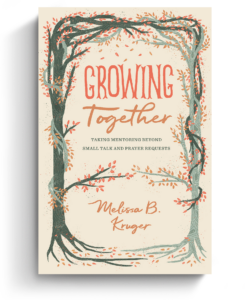For another view, see “To Dip or Not to Dip: The Case for Intinction” by Doug Ponder.
What is intinction? Intinction refers to a way of administering the Lord’s Supper. The minister dips the bread into the wine (or juice) and then presents that bread to the recipient. (The English word “intinction” comes from the Latin verb intingere—“to dip into.”) In the Middle Ages, the practice was largely confined to the Eastern church. In fact, it really wasn’t practiced in the Western church until the 20th century.
Christ and his apostles have given explicit directions that speak directly to the question of intinction.
As Protestants in the Reformation tradition, we must observe the sacraments in a way that submits to the teaching of Scripture. In the public worship of God, we may only do what God has authorized us to do. What he hasn’t expressly authorized in Scripture is thereby forbidden.
When we look to the Bible’s testimony for the administration of the Lord’s Supper, we find that Christ and his apostles have given us explicit directions that speak directly to the question of intinction. Consider Paul’s account of the words of institution:
For I received from the Lord what I also delivered to you, that the Lord Jesus on the night when he was betrayed took bread, and when he had given thanks, he broke it, and said, “This is my body which is for you. Do this in remembrance of me.” In the same way also he took the cup, after supper, saying, “This cup is the new covenant in my blood. Do this, as often as you drink it, in remembrance of me.” For as often as you eat this bread and drink the cup, you proclaim the Lord’s death until he comes. (1 Cor. 11:23–26)
Notice three things about Paul’s statements.
1. The Lord’s Supper involves two distinct elements (bread and wine) and two distinct actions relating to those elements.
The bread is broken and given to the recipients. Then the cup is presented and given to the recipients. Further, both Matthew and Mark tell us in their accounts of the Last Supper that Jesus blesses the bread before he breaks it (Matt. 26:26; Mark 14:22), and he gives thanks before he distributes the cup (Matt. 26:27; Mark 14:23). So the bread is blessed, broken, and given, while the cup is accompanied by thanksgiving, presented, and given. Intinction conflates two elements, and their corresponding actions, that the New Testament purposefully keeps separate.
2. The breaking and giving of the bread, and the presentation and giving of the cup, are explicitly distinct in time.
“In the same way,” Paul reflects, Jesus also “took the cup after supper” (1 Cor. 11:25). The bread and the cup are neither offered nor distributed in a single action. These are two distinct and successive actions. When, therefore, Jesus commands his disciples—“Take, eat; this is my body” and “drink of it, all of you”—he intends for these commands to be observed successively, not simultaneously. Believers are first to take and eat the bread; then they take and drink the cup.
What Jesus appoints as two actions and commands separated in time, intinction collapses into a single action and command.
3. Each element, and its corresponding action, has particular and distinct significance.
Paul reminds us that the whole observance of the Supper points to “the Lord’s death.” The broken bread and presented cup each, in its own way, set forth Christ’s death on the cross. The bread points to Christ, who gave himself as a sacrifice for sinners and whom the believer feeds on by faith. The cup points to the cup of divine wrath that Christ willingly drank on behalf of his people (see Isa. 51:17; Jer. 25:15–38; Luke 22:42).
Intinction, by combining the ingestion of bread and wine into a single action, strikes at the symbolic integrity of both. That is to say, the bread and wine lose the unique meaning that Christ has assigned to each. Thus intinction deprives us of the Supper’s full portrayal of what Christ has accomplished. Indeed, as Scott Swain recently pointed out, “intinction, whereby the bread absorbs the wine, reverses the *sign*ificance of a body broken with its blood poured out.”
Some contemporary Protestants have offered various arguments in support of intinction. Some have argued that intinction allows people who are sick or infirm to ingest the elements more easily. Still others have argued that intinction allows for a more efficient and timely distribution of the elements.
What Jesus appoints as two actions and commands separated in time, intinction collapses into one.
But whatever the practical merits of these arguments (or others like them) may be, they face an insurmountable obstacle. The specific way in which Jesus has instituted the Lord’s Supper simply does not accommodate the practice of intinction. By Christ’s command, the minister breaks and gives the bread, and then presents and gives the cup. Believers, likewise, are to take and eat the bread, and then take and drink the cup. The church has no right to modify commands relating to the worship of God.
The Lord’s Supper is an occasion for believers to remember the death of Christ for sinners. He has assigned the bread and wine each distinct significance as a help to the believer’s spiritual nourishment. Taking the bread and wine separately, according to Christ’s command and example, offers just what the sin-weary Christian needs—a full-orbed glimpse into the saving merits of the One who loved us and gave himself for us.
Involved in Women’s Ministry? Add This to Your Discipleship Tool Kit.
 We need one another. Yet we don’t always know how to develop deep relationships to help us grow in the Christian life. Younger believers benefit from the guidance and wisdom of more mature saints as their faith deepens. But too often, potential mentors lack clarity and training on how to engage in discipling those they can influence.
We need one another. Yet we don’t always know how to develop deep relationships to help us grow in the Christian life. Younger believers benefit from the guidance and wisdom of more mature saints as their faith deepens. But too often, potential mentors lack clarity and training on how to engage in discipling those they can influence.
Whether you’re longing to find a spiritual mentor or hoping to serve as a guide for someone else, we have a FREE resource to encourage and equip you. In Growing Together: Taking Mentoring Beyond Small Talk and Prayer Requests, Melissa Kruger, TGC’s vice president of discipleship programming, offers encouraging lessons to guide conversations that promote spiritual growth in both the mentee and mentor.

































